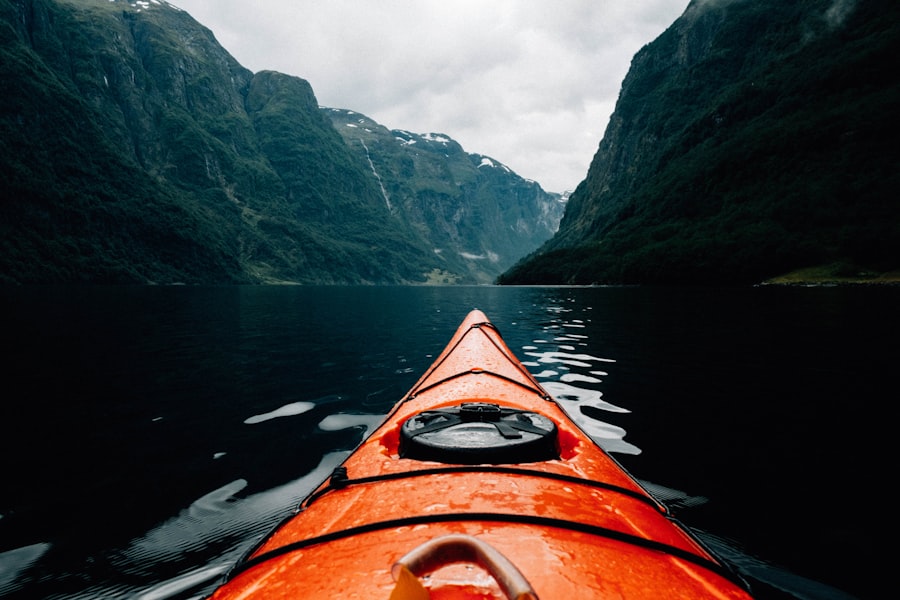E-biking has surged in popularity over recent years, particularly in the breathtaking landscapes of Norway. The combination of electric assistance and the rugged beauty of the Norwegian mountains creates an exhilarating experience for both seasoned cyclists and newcomers alike. With its stunning fjords, towering peaks, and lush valleys, Norway offers a unique backdrop for e-biking adventures.
The electric bike allows riders to tackle challenging terrains with ease, making it possible to explore areas that might otherwise be inaccessible or daunting. The appeal of e-biking in Norway extends beyond the physical thrill; it also provides an opportunity to connect with nature in a profound way. As you glide through the serene landscapes, the gentle hum of the electric motor harmonises with the sounds of nature, creating a peaceful yet invigorating atmosphere.
Whether you are navigating winding trails or ascending steep hills, e-biking allows you to immerse yourself in the stunning vistas that define Norway’s mountainous regions. Book your 1-hour strategy session with Norway Relocation Group.
Summary
- E-biking in the Norwegian mountains offers a unique and thrilling experience for outdoor enthusiasts.
- Understanding the terrain and weather conditions is crucial for a safe and enjoyable e-biking adventure in the mountains.
- Safety precautions such as wearing a helmet, carrying a first aid kit, and being aware of wildlife are essential for e-biking in the mountains.
- Choosing the right e-bike with suitable features and specifications is important for mountain riding in Norway.
- Navigating trails and routes in the Norwegian mountains requires careful planning and consideration of environmental impact and wildlife conservation.
Understanding the Terrain and Weather Conditions
The Norwegian mountains are characterised by their diverse terrain, ranging from rocky paths and steep inclines to smooth gravel roads and forest trails. Understanding this variety is crucial for any e-biker planning to explore the region. The trails can vary significantly in difficulty, with some routes suitable for beginners while others challenge even the most experienced riders.
Familiarising yourself with the specific trails you intend to ride will help you prepare adequately and choose the right e-bike for your adventure. Weather conditions in the Norwegian mountains can change rapidly, making it essential for e-bikers to stay informed. The summer months typically offer mild temperatures and longer daylight hours, ideal for exploring the outdoors.
However, even during this season, sudden rain showers or cooler winds can occur, particularly at higher altitudes. Riders should always check weather forecasts before heading out and be prepared for varying conditions. Dressing in layers and carrying waterproof gear can make a significant difference in comfort and safety during your ride.
Safety Precautions for E-Biking in the Mountains

Safety should always be a top priority when e-biking in mountainous regions. The combination of steep trails and electric assistance can lead to increased speeds, which may pose risks if not managed properly. Wearing a well-fitted helmet is non-negotiable; it is your first line of defence against potential accidents.
Additionally, consider wearing protective gear such as knee and elbow pads, especially if you are venturing onto more challenging trails. Another critical aspect of safety is ensuring that your e-bike is in good working order before setting off. Regularly check the brakes, tyres, and battery levels to avoid any mechanical issues during your ride.
It is also wise to carry a basic repair kit, including tools for fixing flat tyres or adjusting brakes. Furthermore, informing someone about your planned route and expected return time can be a lifesaver in case of emergencies.
Choosing the Right E-Bike for Mountain Riding
Selecting the appropriate e-bike is fundamental to enjoying your mountain biking experience. There are various types of e-bikes designed specifically for different terrains and riding styles. For mountainous regions, a mountain e-bike with robust suspension and wide tyres is often recommended.
These features provide better traction and stability on uneven surfaces, allowing you to navigate rocky paths and steep inclines with confidence. When choosing an e-bike, consider factors such as battery life and motor power. A bike with a higher wattage motor will offer more assistance on steep climbs, while a battery with a longer range will allow you to explore further without worrying about running out of power.
Additionally, test riding different models can help you find one that feels comfortable and suits your riding style. Investing in a quality e-bike tailored for mountain riding will significantly enhance your overall experience.
Navigating Trails and Routes in the Norwegian Mountains
The Norwegian mountains boast an extensive network of trails catering to various skill levels and preferences. From well-marked paths suitable for families to challenging routes designed for experienced riders, there is something for everyone. Many popular trails are maintained by local authorities or cycling clubs, ensuring they are safe and accessible for e-bikers.
Using navigation tools such as GPS devices or mobile apps can greatly assist in finding your way through the mountains. These tools often provide detailed maps of trails, including elevation changes and points of interest along the route. Additionally, many e-bikers find it helpful to join local cycling groups or guided tours, which can offer valuable insights into the best routes and hidden gems within the region.
Wildlife and Environmental Considerations

As you embark on your e-biking adventure in the Norwegian mountains, it is essential to be mindful of the local wildlife and environment. Norway is home to a diverse range of flora and fauna, including reindeer, elk, and various bird species. Respecting their habitats is crucial; sticking to designated trails helps minimise disturbances to wildlife and preserves the natural landscape.
Moreover, environmental considerations extend beyond wildlife protection. E-bikers should practice Leave No Trace principles by ensuring that they do not litter or damage vegetation along their routes. Being conscious of your impact on the environment not only helps preserve Norway’s stunning landscapes but also enhances the experience for future generations of outdoor enthusiasts.
Accessing Mountain Huts and Accommodation Options
One of the unique aspects of exploring the Norwegian mountains is the availability of mountain huts and accommodation options along popular trails. These huts provide a perfect resting point for weary cyclists, offering food, shelter, and sometimes even overnight stays. Many huts are run by local organisations or volunteer groups dedicated to maintaining Norway’s outdoor culture.
When planning your e-biking trip, consider incorporating stays at these mountain huts into your itinerary. Not only do they provide a chance to recharge physically with hearty meals, but they also offer opportunities to connect with fellow adventurers and share stories about your experiences on the trails. Booking in advance during peak seasons is advisable to ensure availability.
Local Regulations and Etiquette for E-Biking in the Mountains
Understanding local regulations regarding e-biking is vital for ensuring a safe and enjoyable experience in Norway’s mountainous regions. Many areas have specific rules governing where e-bikes are permitted, particularly concerning protected natural areas or national parks. Familiarising yourself with these regulations will help you avoid fines and contribute to responsible cycling practices.
In addition to regulations, adhering to local etiquette is equally important. This includes yielding to pedestrians and other cyclists on shared paths, maintaining a reasonable speed, and being courteous when passing others on narrow trails. By respecting these guidelines, you contribute to a positive atmosphere among outdoor enthusiasts while fostering a sense of community within Norway’s cycling culture.
Tips for E-Biking at High Altitudes
E-biking at high altitudes presents unique challenges that require careful consideration. As elevation increases, oxygen levels decrease, which can affect physical performance and stamina. It is advisable to acclimatise gradually by starting with shorter rides at lower elevations before tackling more challenging routes at higher altitudes.
Hydration is crucial when biking at high altitudes; ensure you carry sufficient water to stay hydrated throughout your ride. Additionally, be mindful of temperature fluctuations; it can be significantly cooler at higher elevations than at lower altitudes. Dressing in layers allows you to adjust your clothing as needed while maintaining comfort during your ride.
Essential Gear and Equipment for E-Biking in the Mountains
Equipping yourself with the right gear is essential for a successful e-biking adventure in the mountains. In addition to a reliable helmet and protective gear, consider investing in padded cycling shorts for added comfort during long rides. A good pair of cycling gloves can also enhance grip and reduce fatigue on longer journeys.
Other essential equipment includes a sturdy backpack for carrying water, snacks, and any necessary tools or spare parts for your bike. A portable phone charger can be invaluable for keeping your devices powered during extended rides, especially if you rely on navigation apps or wish to capture stunning photographs along the way.
Recommended E-Biking Routes and Destinations in the Norwegian Mountains
Norway offers an array of breathtaking e-biking routes that cater to all skill levels and preferences. One highly recommended destination is Rjukan, known for its stunning landscapes and well-maintained trails that wind through picturesque valleys and alongside waterfalls. The area offers routes suitable for both beginners and experienced riders alike.
Another must-visit location is Geirangerfjord, where cyclists can enjoy panoramic views of one of Norway’s most famous fjords while navigating scenic trails that meander through lush forests and dramatic cliffs. For those seeking a more challenging experience, the trails around Åndalsnes provide steep climbs rewarded with breathtaking vistas at every turn. In conclusion, e-biking in the Norwegian mountains presents an unparalleled opportunity to explore some of nature’s most stunning landscapes while enjoying the thrill of cycling with electric assistance.
By understanding the terrain, prioritising safety, choosing the right equipment, and respecting local regulations, you can embark on an unforgettable adventure that connects you with both nature and fellow outdoor enthusiasts. For those looking to immerse themselves further into Norwegian culture while enhancing their language skills during their travels, consider enrolling in Norwegian courses at NLS Norwegian Language School in Oslo. These courses offer an excellent opportunity not only to learn the language but also to understand local customs better—an invaluable asset when navigating both urban environments and remote mountain trails alike!
Speak Norwegian with confidence. Enroll in a class at the NLS Norwegian Language School now.

